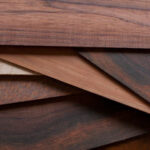Jonny Greenwood, the enigmatic guitarist of Radiohead, is renowned for his innovative and often unconventional guitar playing. While he experiments with a variety of instruments and effects, one guitar has become synonymous with his sound and Radiohead’s sonic landscape: the Fender Telecaster. This article delves into the history of Jonny Greenwood’s Telecasters, tracing the evolution of his gear and its crucial role in shaping the distinctive Radiohead Guitar sound we know and love. From stolen favorites to heavily modified mainstays, we’ll explore the specific models that have contributed to his unique sonic palette across Radiohead’s discography and live performances.
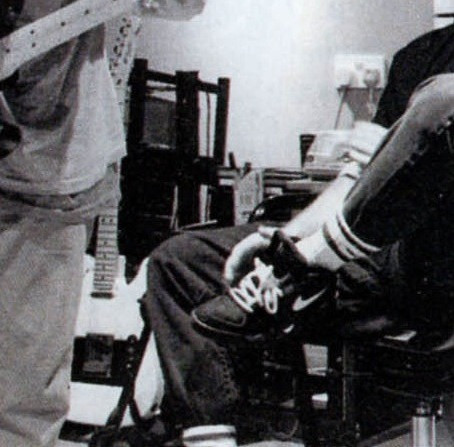 A photo featuring Jonny’s original Cream Telecaster, capturing a piece of Radiohead's early history during the Drill EP recording sessions.
A photo featuring Jonny’s original Cream Telecaster, capturing a piece of Radiohead's early history during the Drill EP recording sessions.
Jonny Greenwood’s Telecaster journey is a story of five distinct guitars, each with its own tale and contribution to his signature style. Let’s break down the fascinating history of these instruments:
- Cream Fender Telecaster: A cherished first electric guitar, tragically stolen early in his career.
- Tobacco Burst Fender Telecaster Plus (Tele1): His workhorse and most frequently used guitar, a constant companion since 1995.
- Tobacco Burst Fender Telecaster Plus (old Tele1): An earlier model, stolen and lost to time, but crucial to Radiohead’s early sound.
- Ebony Frost Fender Telecaster Plus (old Tele2): Stolen and miraculously recovered, this guitar has an interesting history of its own.
- Tobacco Burst Fender Telecaster Standard/Plus (Tele2): The current backup, modified to mirror his beloved main Telecaster.
The Cream Fender Telecaster: A Stolen Start
This Cream Fender Telecaster holds a special place as Jonny Greenwood’s very first electric guitar. Purchased from his guitar teacher at the age of sixteen, it marked the beginning of his electric guitar journey. Sadly, this guitar’s story took a unfortunate turn when it was stolen in Leeds at the Duchess of York venue on May 15, 1992. This theft occurred during Radiohead’s inaugural tour, the “Creep Tour,” making it a poignant piece of Radiohead history lost to circumstance. Though no longer in his possession, this Cream Telecaster represents the genesis of Jonny Greenwood’s relationship with the Telecaster and the early days of Radiohead’s rise.
Tobacco Burst Fender Telecaster Plus (Tele1): The Indispensable Radiohead Guitar
Jonny Greenwood’s Tobacco Burst Fender Telecaster Plus, often referred to as “Tele1,” stands as his most iconic and heavily utilized guitar. Acquired in 1995, it has been an integral part of every Radiohead album and virtually every live performance since. While often described as having a “Sunburst” finish, it’s accurately identified as a “Tobacco Burst,” the standard finish for Telecaster Plus models of its time.
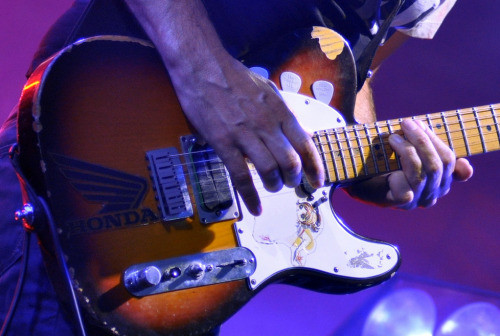 Close-up image of Jonny Greenwood's Tobacco Burst Fender Telecaster Plus (Tele1), highlighting the removed pickup selector knob and kill switch modifications.
Close-up image of Jonny Greenwood's Tobacco Burst Fender Telecaster Plus (Tele1), highlighting the removed pickup selector knob and kill switch modifications.
Beyond its stock electronics, Tele1 has undergone several notable modifications that contribute to Jonny’s distinctive playing style. The bridge pickup coil-split was removed to accommodate his signature kill-switch. Visually, the pickup selector knob is absent, replaced with tape, and the volume potentiometer knob is also gone, though the pot remains functional. A unique addition is the ball-end of a guitar string, screwed onto the body below the neck, which Jonny uses to hook the high e-string for creating exceptionally high-pitched notes, a technique heard across numerous Radiohead tracks. This Telecaster’s battle-hardened appearance and personalized modifications are testaments to its crucial role in shaping the Radiohead sound. You can witness this legendary guitar in action in countless live videos, including performances of “Airbag“, “Bodysnatchers“, and “Staircase“.
Tobacco Burst Fender Telecaster Plus (old Tele1): The Pablo Honey and The Bends Era Guitar
Before Tele1, there was another Tobacco Burst Fender Telecaster Plus, often referred to as “old Tele1.” This guitar was Jonny’s original Telecaster Plus and played a pivotal role in Radiohead’s early success. It was the primary guitar used for the majority of the recording sessions for their breakthrough albums, Pablo Honey and The Bends. Jonny had already implemented a kill-switch modification on this guitar by late 1992, showcasing his early inclination towards guitar customization. He heavily utilized this kill-switch during Radiohead’s early 90s live performances, contributing to the raw and energetic sound of that era.
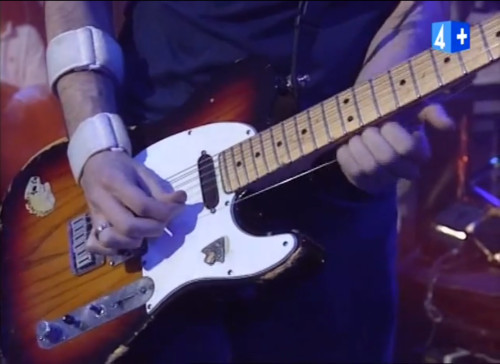 Jonny Greenwood playing his Tobacco Burst Fender Telecaster Plus (old Tele1) in the music video for "Just", showcasing the guitar during Radiohead's early period.
Jonny Greenwood playing his Tobacco Burst Fender Telecaster Plus (old Tele1) in the music video for "Just", showcasing the guitar during Radiohead's early period.
Tragically, “old Tele1” was stolen in 1995, along with the rest of the band’s gear, marking the end of an era for this particular instrument. The last known studio recording featuring this guitar is “Lucky,” recorded just a month prior to its theft. Fans can clearly see “old Tele1” in action in the music video for “Just,” offering a visual glimpse into this important piece of Radiohead guitar history.
Ebony Frost Fender Telecaster Plus (old Tele2): A Spare with a Story of Rediscovery
The Ebony Frost Fender Telecaster Plus, known as “old Tele2,” served as Jonny’s second Telecaster Plus and initially acted as a spare to “old Tele1.” Manufactured in 1990, it was acquired sometime in the early 90s and saw considerable use during touring in 1994 and 1995. This guitar was often designated for songs requiring alternate tunings, such as “My Iron Lung“. Intriguingly, it even made its way onto the studio recording of “My Iron Lung,” adding its sonic character to this iconic track.
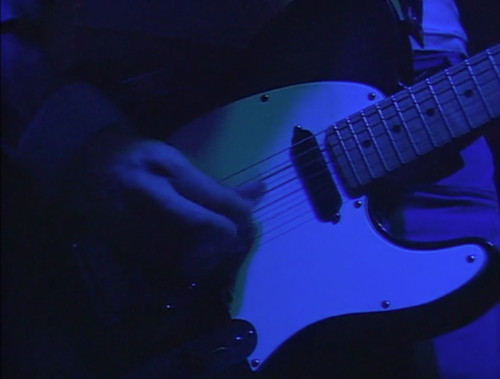 Screenshot from Radiohead's "Live at The Astoria" DVD, clearly showing Jonny Greenwood playing the Ebony Frost Fender Telecaster Plus (old Tele2) during a performance of "My Iron Lung".
Screenshot from Radiohead's "Live at The Astoria" DVD, clearly showing Jonny Greenwood playing the Ebony Frost Fender Telecaster Plus (old Tele2) during a performance of "My Iron Lung".
Like “old Tele1,” “old Tele2” was also stolen in the unfortunate 1995 gear theft. However, in a surprising turn of events, Jonny reacquired this instrument in 2014. Since its return, he has used it for performances of Steve Reich’s Electric Counterpoint, showcasing its versatility beyond Radiohead’s rock context. Notably, the intro and verses of the album version of “My Iron Lung” are taken directly from the band’s performance at The Astoria, where “old Tele2” is clearly visible in Radiohead’s “Live at The Astoria” DVD, solidifying its place in Radiohead’s performance history.
Tobacco Burst Fender Telecaster Standard/Plus (Tele2): The Modern Backup
Jonny’s current spare Telecaster is another Tobacco Burst model, purchased around 1995. This guitar began as a “first model” American Telecaster Standard but was subsequently modified to Telecaster Plus specifications and further customized to closely resemble his beloved Tele1. Mirroring Tele1, it features an added kill-switch and the guitar string ball-end modification.
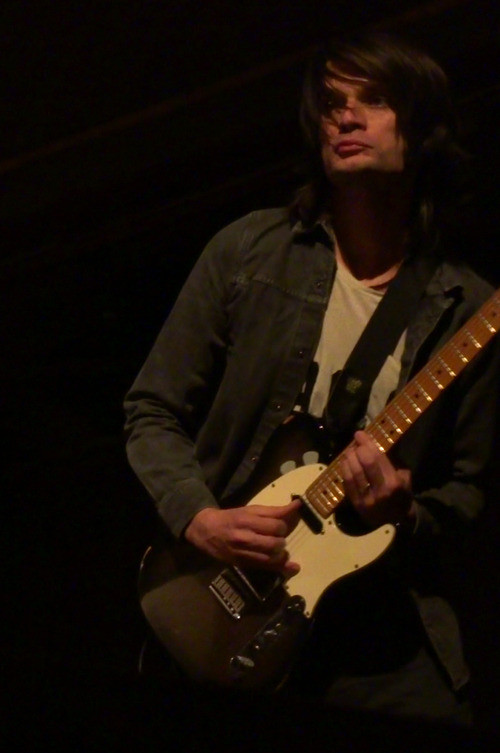 Jonny Greenwood playing his Tobacco Burst Fender Telecaster Standard/Plus (Tele2) at Victoria Hall in Geneva, 2015, during a performance of Electric Counterpoint.
Jonny Greenwood playing his Tobacco Burst Fender Telecaster Standard/Plus (Tele2) at Victoria Hall in Geneva, 2015, during a performance of Electric Counterpoint.
Around 2005-2006, a Korg Kaoss Pad touchpad was fitted to this guitar, indicating potential experimentation with further sonic manipulation. However, this pad has never been used in live performances. Despite the Kaoss Pad remaining dormant on stage, this Telecaster has seen action in performances of Electric Counterpoint, notably during Jonny’s performance at ACO Underground. This Telecaster represents Jonny’s continued reliance on the Telecaster platform and his meticulous approach to backup gear, ensuring his signature sound is always ready.
The Enduring Legacy of Jonny Greenwood’s Telecasters
Jonny Greenwood’s Telecasters are more than just instruments; they are integral components of the Radiohead sound. From the stolen Cream Telecaster that marked his beginnings to the heavily modified Tele1 that defines his signature tone, each guitar tells a story of innovation, adaptation, and a relentless pursuit of sonic exploration. These Telecasters, with their unique modifications and histories, are a testament to Jonny Greenwood’s distinctive approach to guitar playing and their essential contribution to Radiohead’s enduring musical legacy.

